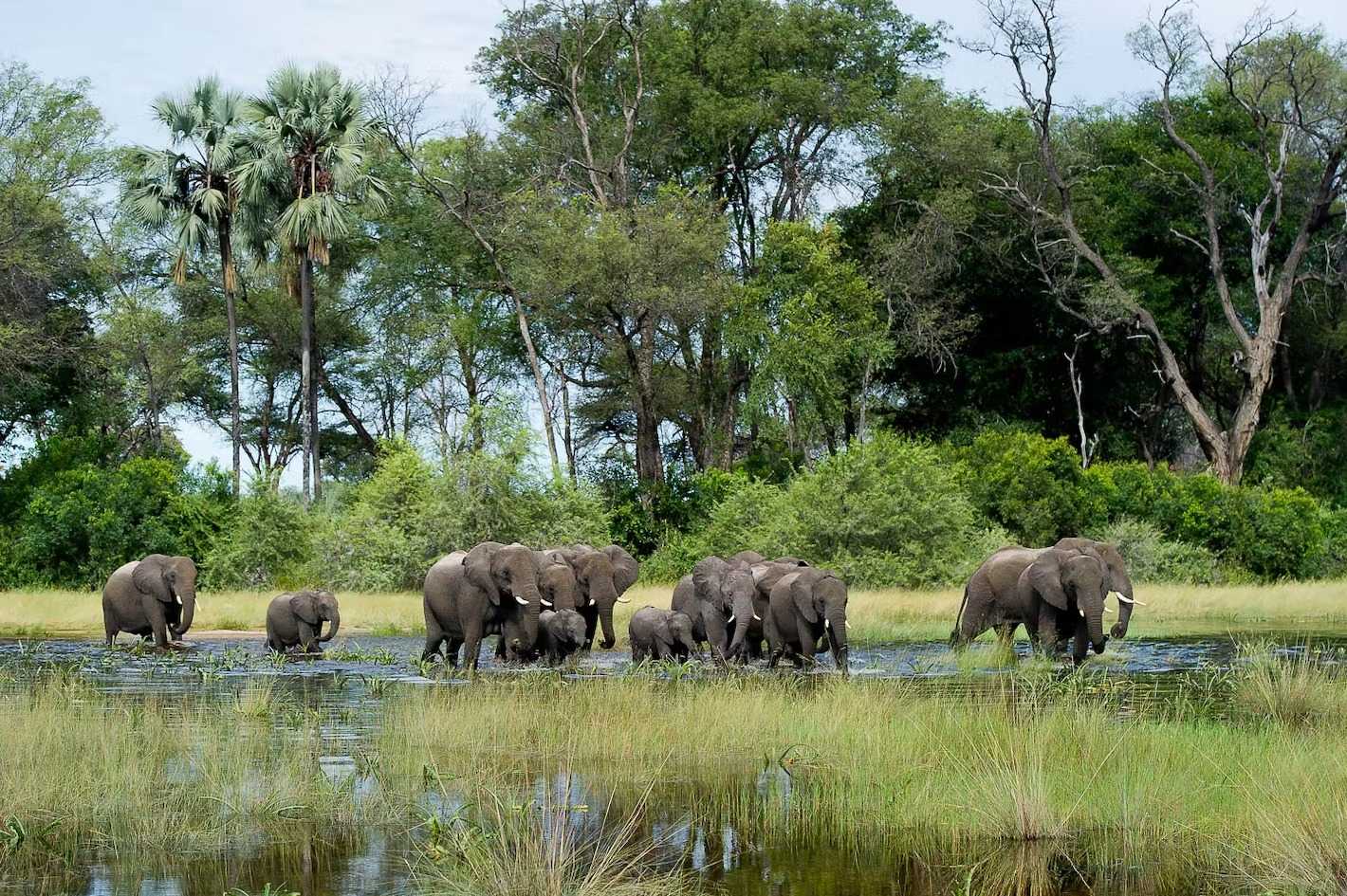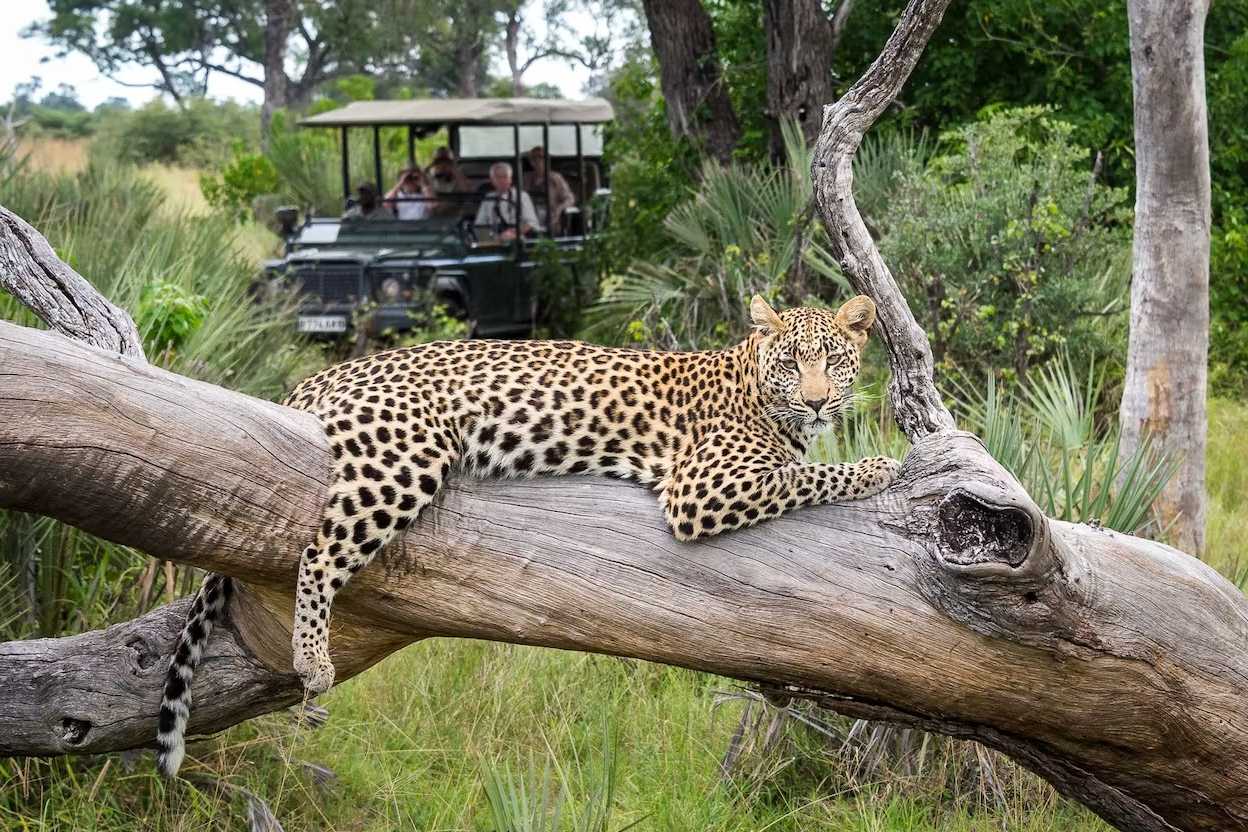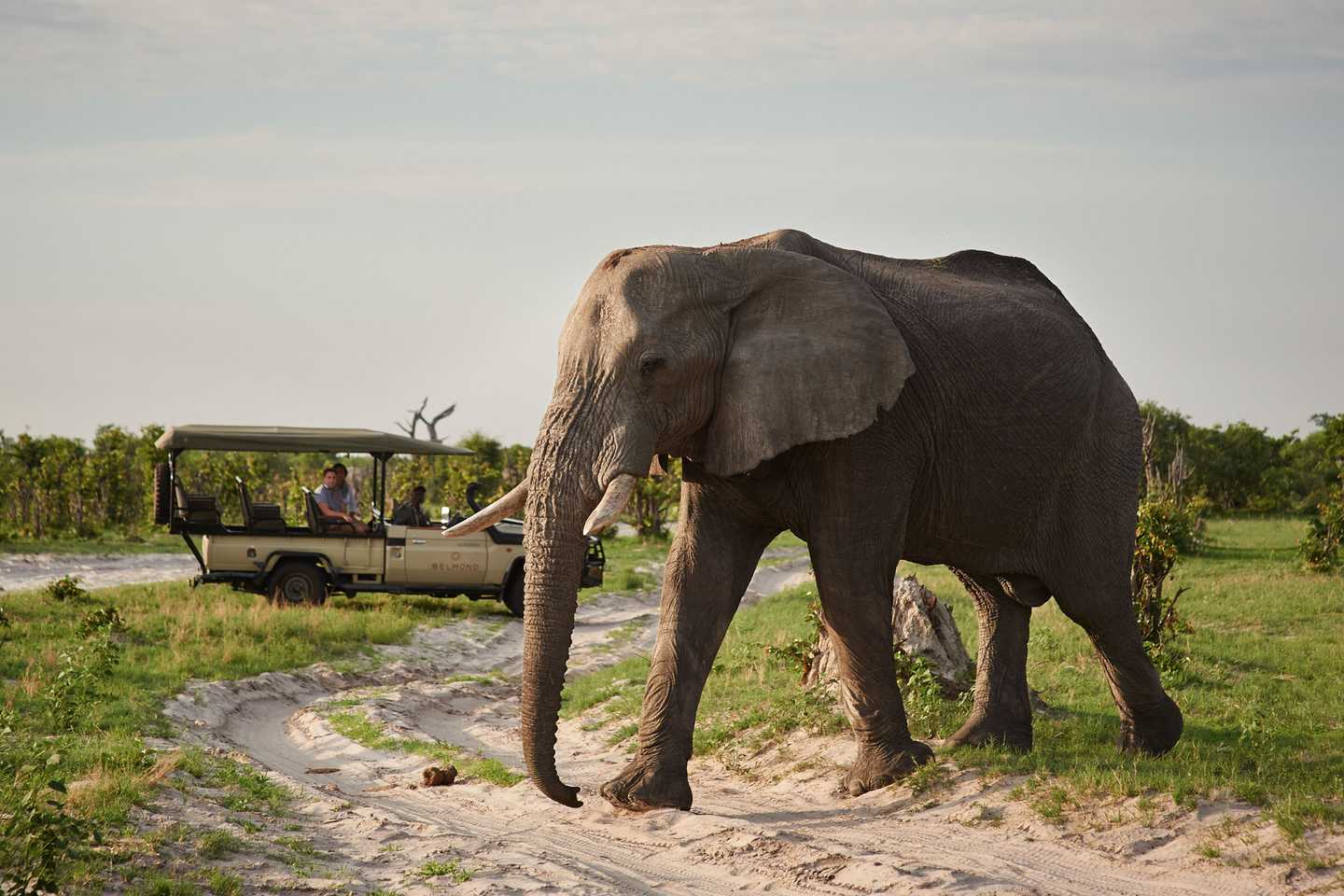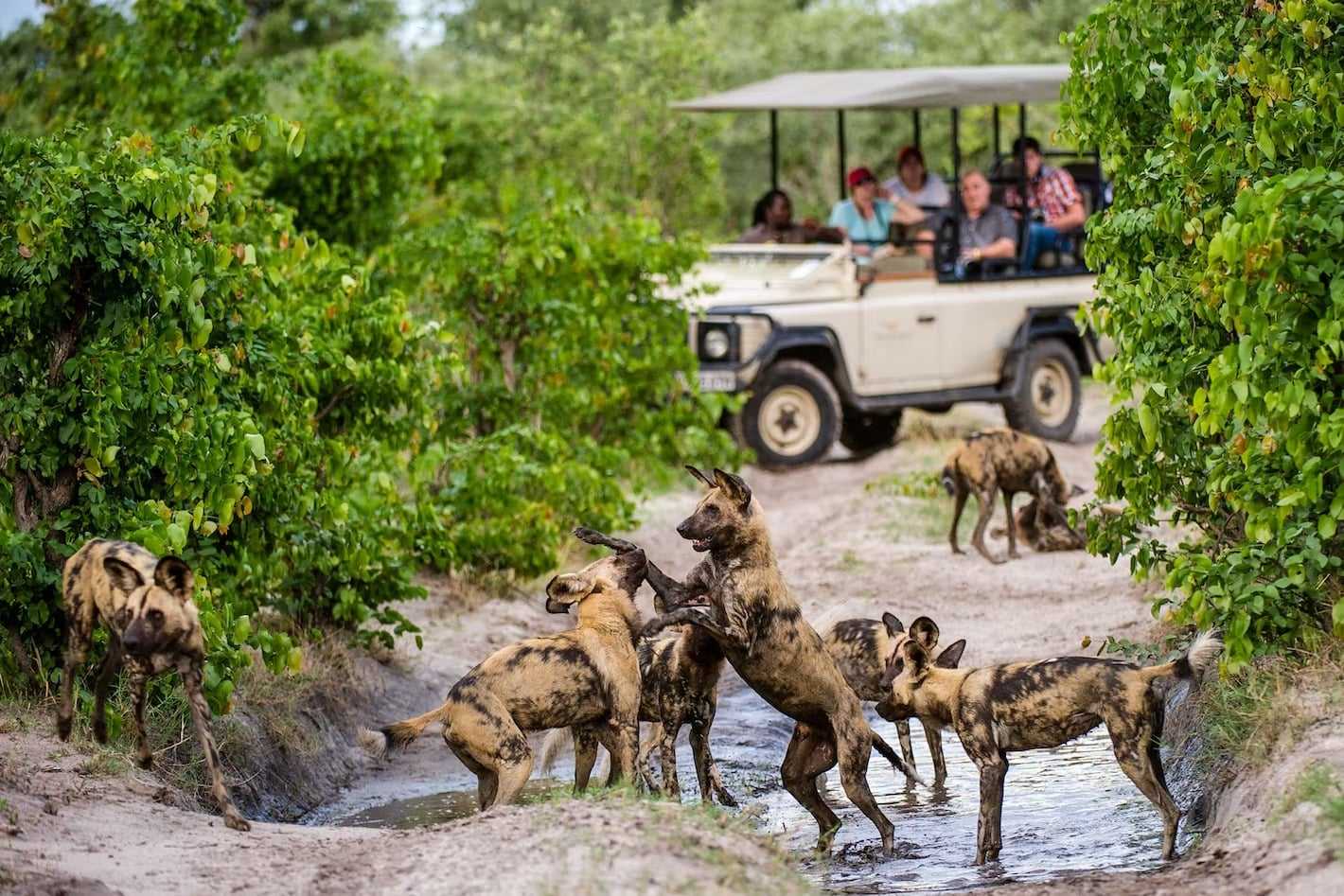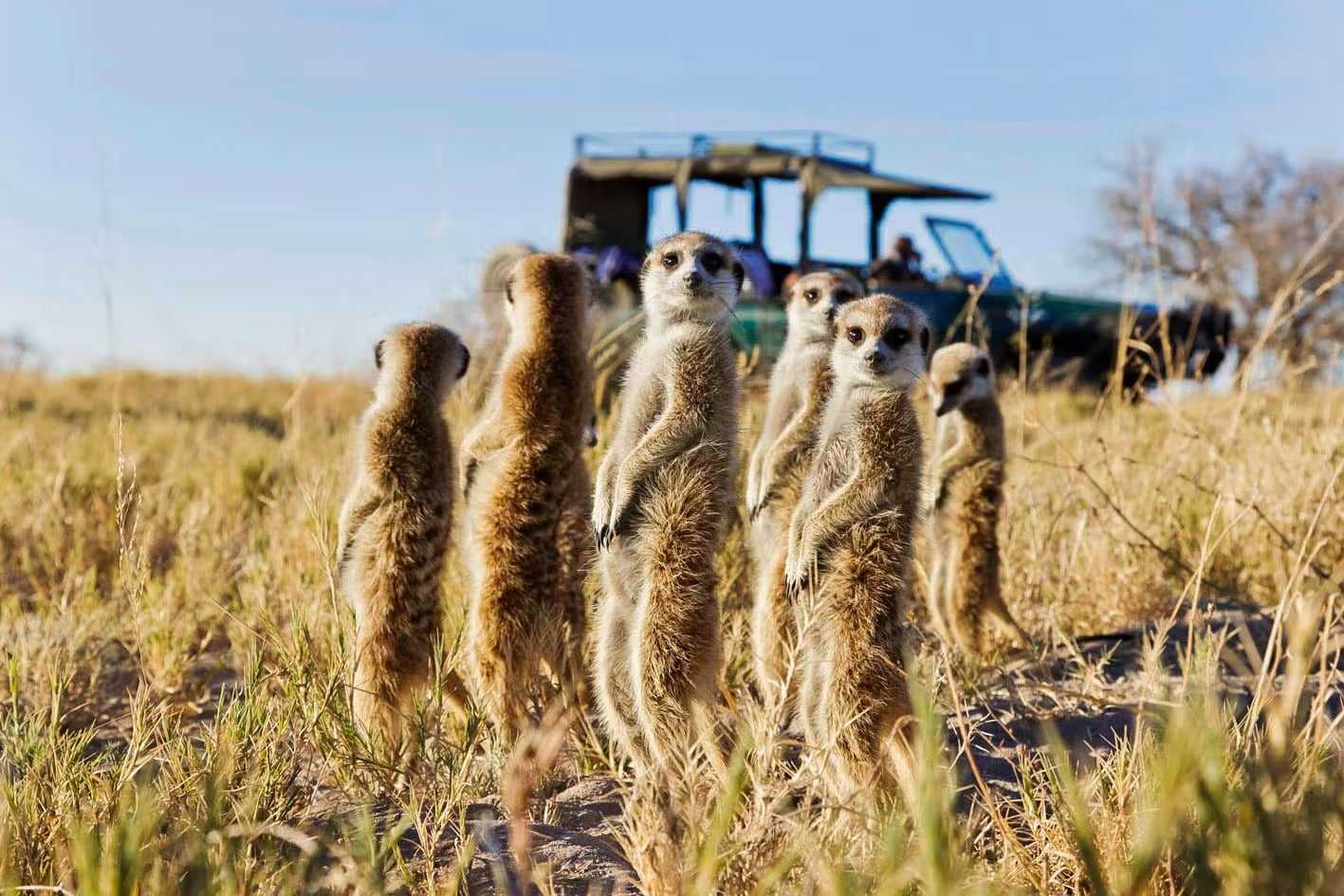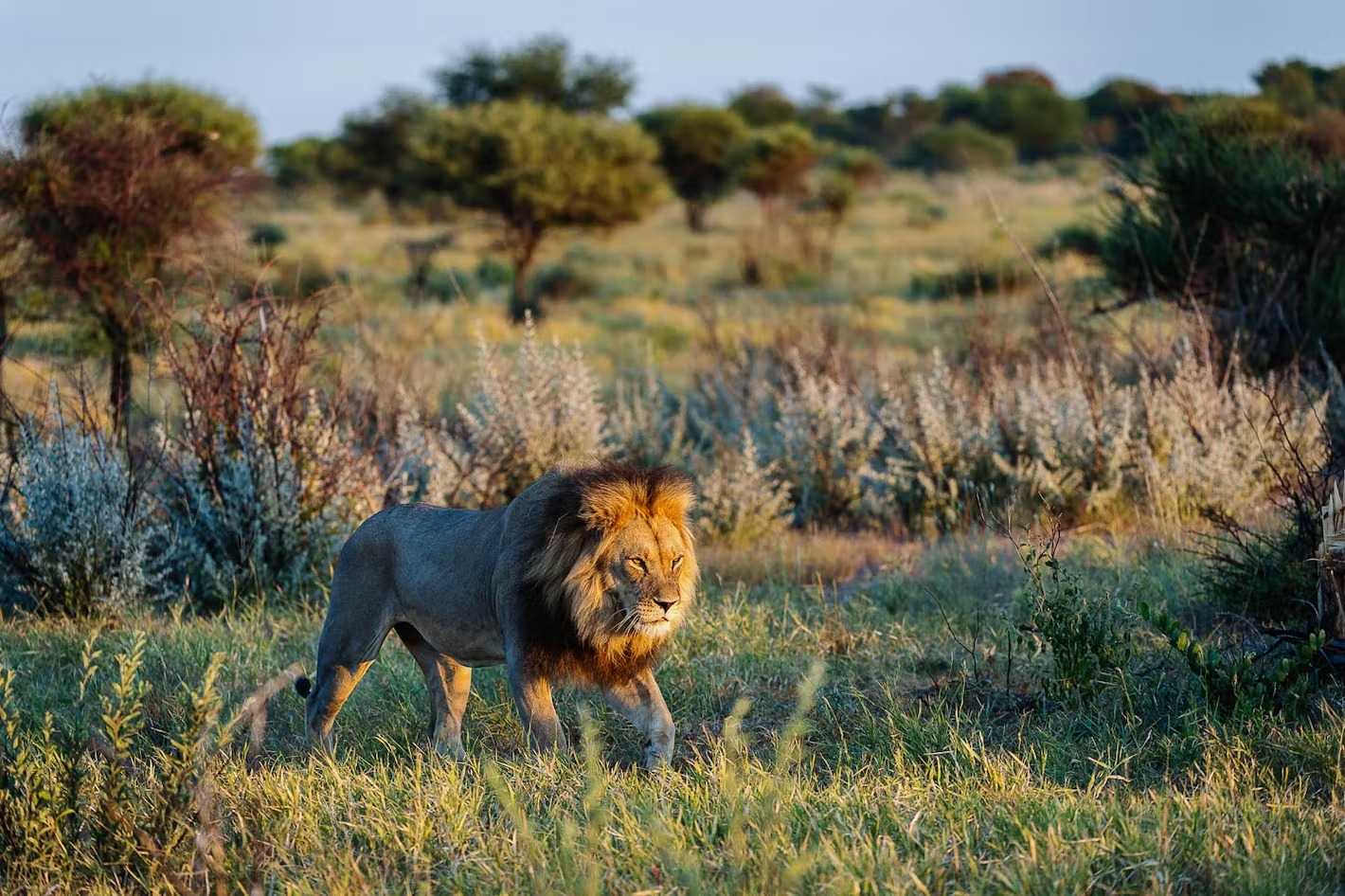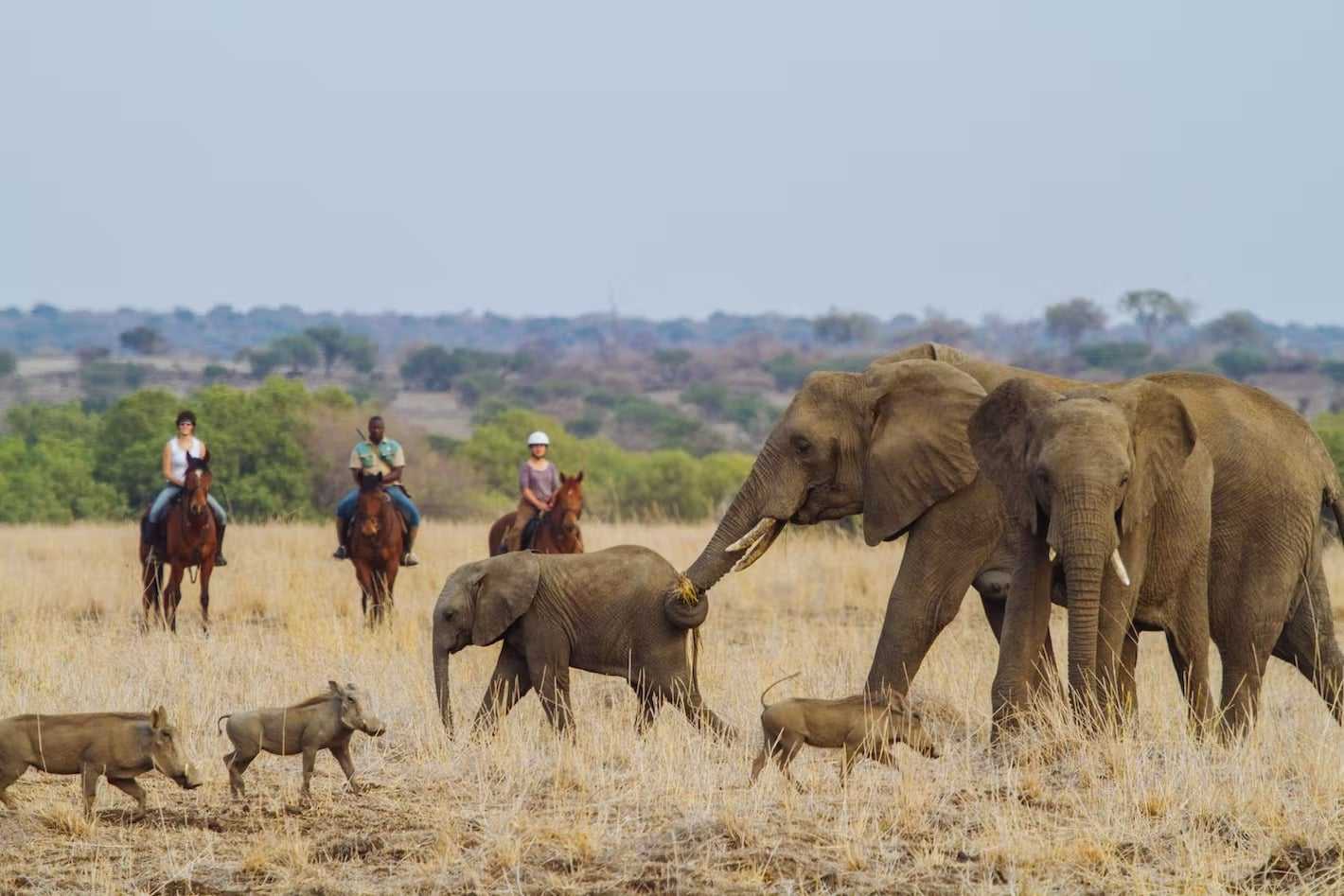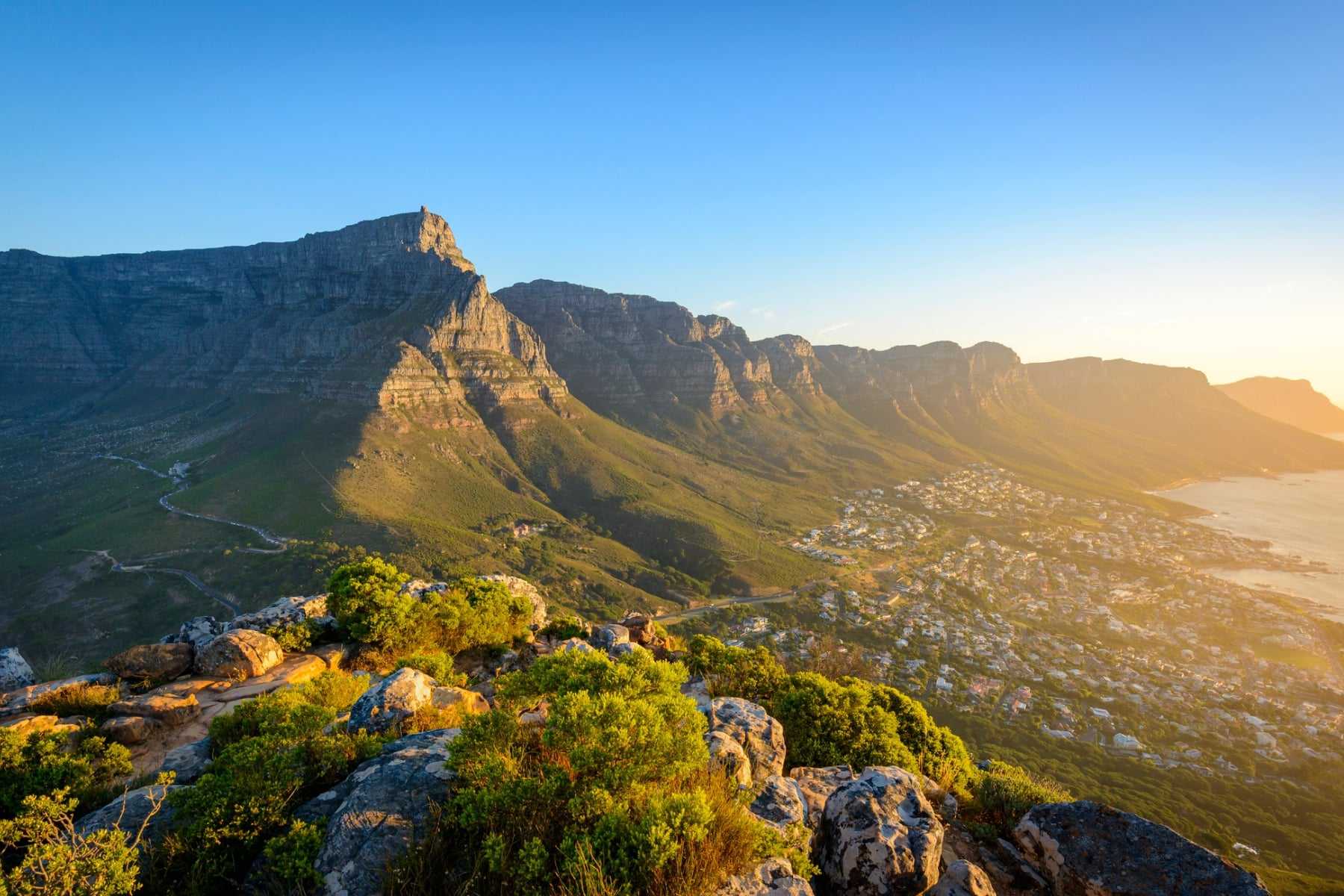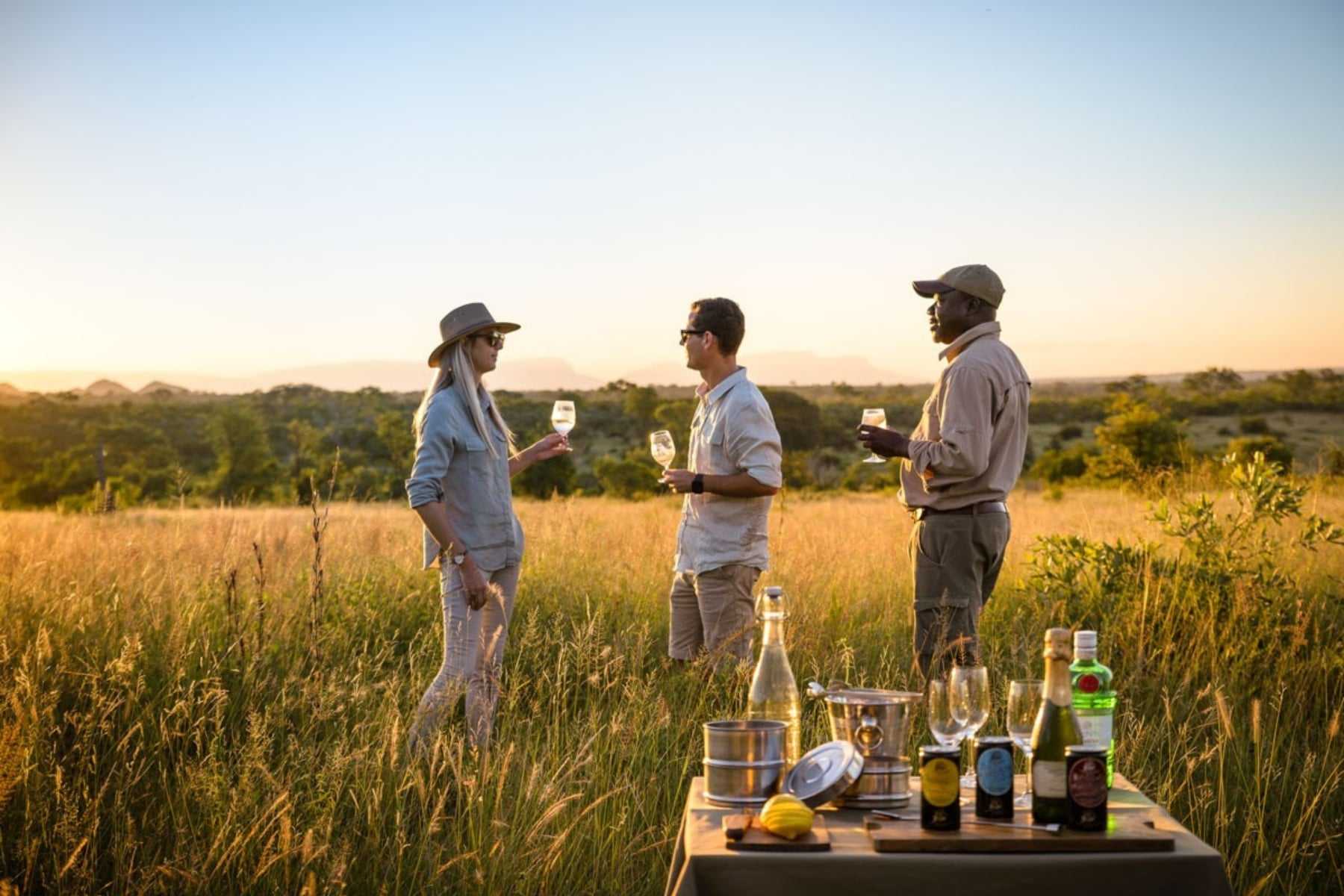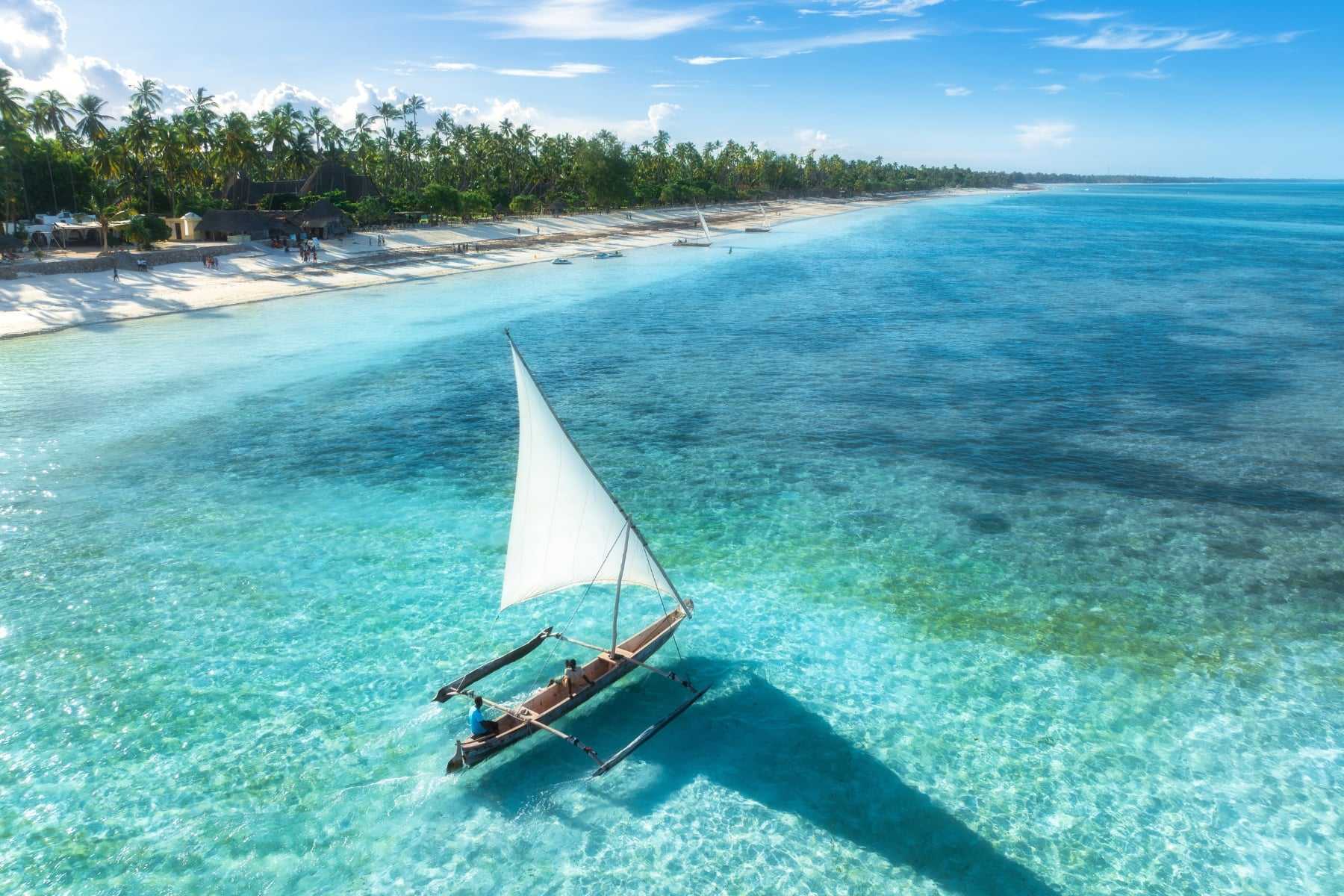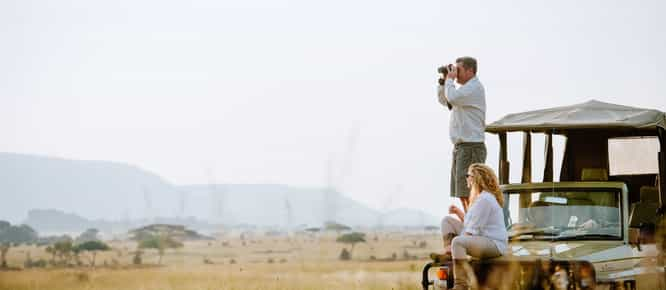What wildlife can be seen on a Botswana safari
A country where silent deserts and grasslands dissolve into glossy lagoons and great, coursing rivers, Botswana is home to an astonishing collection of wildlife. Super herds of elephant, scampering packs of African painted dogs, plentiful birds and big cats in their numbers… The gang’s all here! And whilst the Okavango Delta may be the star of Botswana wildlife, there are plenty of other destinations stuffed with unique and spectacular creatures too. Read on for our guide on what to look for and where.
Habitats
Botswana is a country of deeply contrasting habitats, creating an environment where all manner of creatures are able to survive and thrive. Beginning in the highlands of Angola, before flowing through northern Namibia, the Okavango River cuts through the otherwise arid Kalahari Desert until it fans out into the Okavango Delta. A UNESCO World Heritage Site, the iconic Delta is made up of shimmering floodplains, lagoons and channels, lined with lush banks that attract a whole host of wildlife. Temporary grasslands that recede to expose nutrient rich soil, the floodplains are essential for species that migrate to the region.
Separate from the Okavango Delta, Botswana also flows with immense rivers including the Chobe River, which follows the country’s northern border and provides water for the lush acacia, mopane (a favourite food source for elephants) and jackalberry trees that grow beside it. The river itself is also surrounded by vast, open grasslands interspersed with wooded areas, which are prime grazing spots for the park’s hoofed residents.
In contrast, the Kalahari Desert spans much of central and southwestern Botswana and is actually a semi-arid sandy savanna rather than a true desert. The landscape is made up of sparse vegetation including camelthorn and shepherd’s tree, which sustains a hardy bunch of desert-adapted wildlife. And then there are the salt pans, Makgadikgadi and Nxai. The remnants of an ancient super-lake turned into enormous, salt-crusted pans, they change with the seasons: during the dry months, they are sun-baked and cracked with sparse vegetation whilst in the rainy season, they transform into shallow lakes that attract a variety of wildlife.
Situated in southeastern Botswana, Tuli is made up of rugged terrain, dominated by rocky hills, open plains and towering baobab trees. A rather unique ecosystem, this region has its own superstars of the wildlife world.
Okavango Delta
The mirror-smooth waterways and floodplains of the Okavango Delta have become synonymous with an epic Botswana safari and the Delta’s staggering collection of wildlife has a lot to do with that. The Delta is the stomping (and splashing) ground of the Big Five, and special mention has to go to Savuti, where you’ll spot enormous herds of elephant pursued by the lions who dare to hunt them. The Delta’s tributaries are renowned for their striking birdlife – we’re talking about hundreds of species – including kingfishers, bee-eaters, lilac-breasted rollers, purple herons, elusive pink-throated longclaws, kori bustards (the world’s heaviest flying bird) and Pel’s fishing owl – this is one of the best places to see them in the world.
On mokoro or boat trips, which are especially good in the Central Okavango and Moremi, scan the riverbanks for rare antelope including red lechwe, tsessebe, roan, sable and sitatunga. Keep your eyes peeled for the giveaway swish of a leopard’s tail in the trees on the banks, and at eye-level, you’ll float past impressive pods of hippo. Explore the landscape and islands by vehicle to spot packs of African painted dog or on foot amongst herds of migrating zebra, and then head out on a post-sunset drive to spy nocturnal species like civet, serval, porcupines, honey badgers and bush babies.
Chobe
Think of Chobe and the wide, snaking river likely comes to mind and for good reason; it’s here that wildlife gathers in droves to quench their thirst and cool off. Chobe is famously known as being home to two thirds of Africa’s elephant population and on a boating safari, you may just see them swimming by. Along the banks, you’ll also spy incredible numbers of lion and leopard, giant herds of buffalo and puku antelope (one of 16 species that live in Chobe), while the waters are alive with hippo and crocodile.
Linyanti
Cut across by the flowing Linyanti River, the Linyanti landscape is a blend of marshes and grasslands, lagoons and forests. Whether you’re floating along in a mokoro or taking it all in from a game vehicle, the massive herds of elephant are incredible to see and you should aim to visit between May and October for the best viewings, when the herds gather around reliable water sources. Linyanti is also one of the best places to see packs of African wild dog in the wild, especially between July and August when pups can be spotted scampering near their dens. Search for the region’s more secretive wildlife on night drives where a spotlight may reveal leopards on the hunt, the shining eyes of a bush baby, or the very (very!) rare pangolin.
Makgadikgadi
Located in the Kalahari Basin, the Makgadikgadi is one of the largest salt pans in the world and the wildlife viewing is intriguing. For most of the year, Makgadikgadi is an arid and sun-cracked landscape where desert-adapted creatures like aardwolf, aardvark and rare brown hyena roam. This is also a fantastic time to spend mornings with a family of habituated meerkats who just might choose to use you as a climbing frame or snooze in your lap. By January, the rainy season is in full swing, however, and the lagoons that form in the cracked earth welcome thousands of zebra and wildebeest on the second largest animal migration in Africa. This also means predators are out in full force including Kalahari black-maned lions and cheetahs. At the same time, the migratory birds arrive in colourful clouds including thousands of Greater flamingo who breed at the brimming Sowa Pan.
Just next to Makgadikgadi is Nxai Pan National Park, where the replenished pans attract elephant, 30-strong herds of giraffe and migrating zebras, followed by prowling leopard, cheetah, lion, spotted and brown hyena and African painted dog.
Central Kalahari
Despite being smack-bang in the middle of a desert, this section of the Kalahari is characterised by golden grasslands where unique, oft-unseen creatures make their home. Explore Deception Valley to see black-maned lions on their own turf, or head out on foot to spot colonies of meerkats eyeballing the landscape (and you) from rocky outposts. At night, there’s the chance to watch rare brown hyena, serval, caracal, spotted genet and leopard on the hunt, and honey badgers, porcupines, white-tailed mongoose and bat-eared foxes snuffling in the undergrowth. In February, see newborn oryx, zebra and red hartebeest taking their first steps around the now-brimming pans with predators in hot pursuit.
Tuli
Dubbed the ‘Land of Giants’, Tuli’s wildlife highlight is definitely the unbelievably large herds of elephant, which you can track and encounter (safely) on foot. Tuli is also big cat terrain, and black-maned lions, cheetahs and leopards hunt the plentiful buck and antelope in a game of wits. One of the most impressive areas is Mashatu Game Reserve, where you’ll have the chance to canter alongside zebra and giraffe on horseback, as well as looking for slinking jackals, bat-eared foxes and packs of African painted dogs amongst the grass.
Conservation in Botswana
Botswana’s varied habitats are essential to the survival of many wildlife species, many of which are endangered or vulnerable. Around 40% of Botswana’s land mass is protected as reserves or national parks (to conserve the wildlife that calls them home). The country’s commitment to low-impact tourism with the restriction of lodge building and caps on the number of visitors ensures the protection of these ecosystems and plays a pivotal role in maintaining the region’s astounding biodiversity. Many lodges and camps are also directly involved with conservation projects. As a visitor, you’ll have the chance to learn all about them, and even lend a hand.
How to see Botswana’s wildlife
In Botswana, wildlife is definitely not in short supply. Whether you’re splashing across the floodplains of the Okavango Delta or rumbling through the dust of the Kalahari, open-sided game drives are always an incredible way to cover a lot of ground, observe wildlife, and sometimes follow the animals once you’ve found them (though guides are careful to never be intrusive).
In areas like Chobe, Linyanti and the Okavango Delta, boating safaris are another superb way to see wildlife as the species go about their business. Spot herds of elephant drinking along the banks or splashing in the river, wallowing pods of hippo and crocodiles basking in the sun, and shy antelope, like the rare sitatunga, amongst the reeds. In the Okavango Delta, enjoy a serene exploration of the shallow waterways in a mokoro (dug-out canoe) where tiny reed frogs are revealed and birdlife flits among the greenery.
Of course, you can also experience the landscapes of Botswana on foot, whether that’s spotting great herds of antelope and zebra amongst the grasses or joining members of the San tribe for a fascinating walk and learning their ancient ways of survival. A scenic helicopter flight is also a once-in-a-lifetime experience, providing a bird’s eye view of the wilderness below and may just lead to some unbelievable wildlife encounters like spotting a curious pack of African wild dogs, before landing to see them up-close.
On safari in Botswana, animals and the moments you share in their presence will become some of your most treasured memories from the trip. Whether it’s seeing the Big Five at their majestic best or acting as a climbing frame for a family of meerkats, you’re in for a treat.
